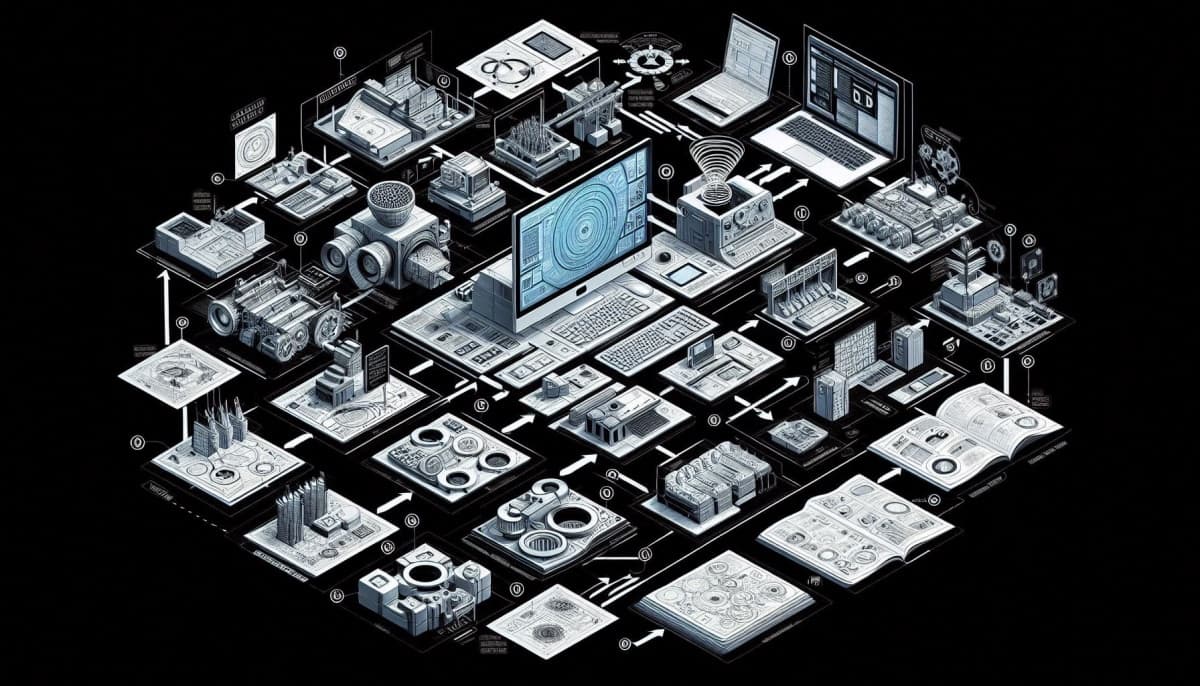Designers and engineers are always searching for tools to speed up their work and create more complex designs. Parametric modeling is promising to revolutionize the way we approach Computer-aided design (CAD). With the principles of parametric modeling you can create, modify, and explore design options faster than ever before.
Let’s explore how parametric modeling can revolutionize your CAD projects.
What is Parametric Modeling?
Parametric modeling is the game-changer you’ve been waiting for. This powerful technique can slash design time by up to 30% and reduce errors by a whopping 40%.
Parametric modeling is a type of 3D modeling that uses mathematical equations and parameters to create and manipulate objects. Unlike traditional modeling methods, where you build a model by directly manipulating points, lines, and surfaces, parametric modeling focuses on defining the relationships between different parts of the model.
This means the entire model updates automatically when you change one parameter. For example, if you’re designing a product with different sizes, you can easily adjust the dimensions without having to rebuild the entire model from scratch. This saves time and reduces the risk of errors.
How Parametric Modeling Enhances the Design Process in CAD
Parametric modeling revolutionizes the CAD design process by offering several key advantages:
Increased Efficiency
- Rapid Design Iterations: By defining parameters and relationships between design elements, designers can quickly explore multiple variations of a product without starting from scratch.
- Automation: Repetitive tasks are automated, saving time and reducing errors. For example, changing a dimension can automatically update related components.
- Design Reuse: Create parametric models that can be easily modified for different product variants or families.
Enhanced Accuracy and Precision
- Mathematical Basis: Parametric models rely on mathematical equations, ensuring precise dimensions and relationships between design elements.
- Reduced Errors: The risk of human error is minimized as changes are propagated consistently throughout the model.
- Improved Consistency: Maintaining design intent and consistency across different design iterations.
Greater Flexibility and Adaptability
- Design Exploration: Easily modify parameters to explore different design options and evaluate their impact.
- Product Variations: Create multiple product variants from a single base model by changing parameters.
- Design Optimization: Optimize designs based on performance criteria, such as weight, cost, or material usage.
Improved Collaboration
- Shared Design Intent: Parametric models clearly communicate design intent through parameters and relationships.
- Version Control: Easily manage different design versions and collaborate with team members.
- Design Reuse: Share parametric models across teams and projects.
Tools and Software for Parametric Modeling
Popular Software Options
Parametric modeling has become an integral part of the design process, and several powerful software tools are available to support it.
Here are some of the most popular options:
| Software | Ease of Use | Assembly Management | Advanced Features | Industry Focus | |
| SOLIDWORKS | 4 | 4 | 3 | General | |
| CATIA | 3 | 5 | 5 | Aerospace, Automotive | |
| 3DEXPERIENCE | 2 | 5 | 5 | General | |
| Autodesk Inventor | 4 | 4 | 4 | Mechanical | |
| PTC Creo | 3 | 4 | 4 | General |
Real-World Examples of Parametric Modeling with AutoCAD
AECOM, an American multinational infrastructure consulting firm headquartered in Dallas, Texas, designed a whole city faster by using special computer tools to change building sizes and road layouts quickly. This helped them finish the project sooner.
NASA used computers to design parts for the Mars Rover. They could easily change the parts to make them better without starting over. This helped them build the rover faster and stronger.
Architects used computers to design tall buildings with lots of different shapes. They could quickly change the design to make it look better or stronger. This helped them finish the building plans faster.
Ford made car factories work better by using computers to plan where machines and workers should be. They could try different layouts to find the fastest way to build cars. This saved them money.
Dubai built a bigger metro system by using computers to design the train stations and tracks. They could quickly change the designs to fit the city better. This helped them finish the project on time.
These are just a few examples of how using computers to design things can help people work faster and better.
Tips for Integrating Parametric Modeling into Your Workflow
- Start with simple models to familiarize yourself with the software and its capabilities.
- Define clear design intent and parameters before starting a model.
- Take advantage of templates and libraries to speed up the design process.
- Utilize parametric modeling for repetitive components or product families.
- Consider using design automation tools to further streamline your workflow.
- Regularly backup your models to protect your work.
- Collaborate with your team to share knowledge and best practices.
Parametric modeling is a great tool for designers and engineers. It helps you work faster and smarter. With parametric modeling, you can create better products and get them ready to sell sooner. As technology keeps improving, parametric modeling will become even more important for making amazing designs.









